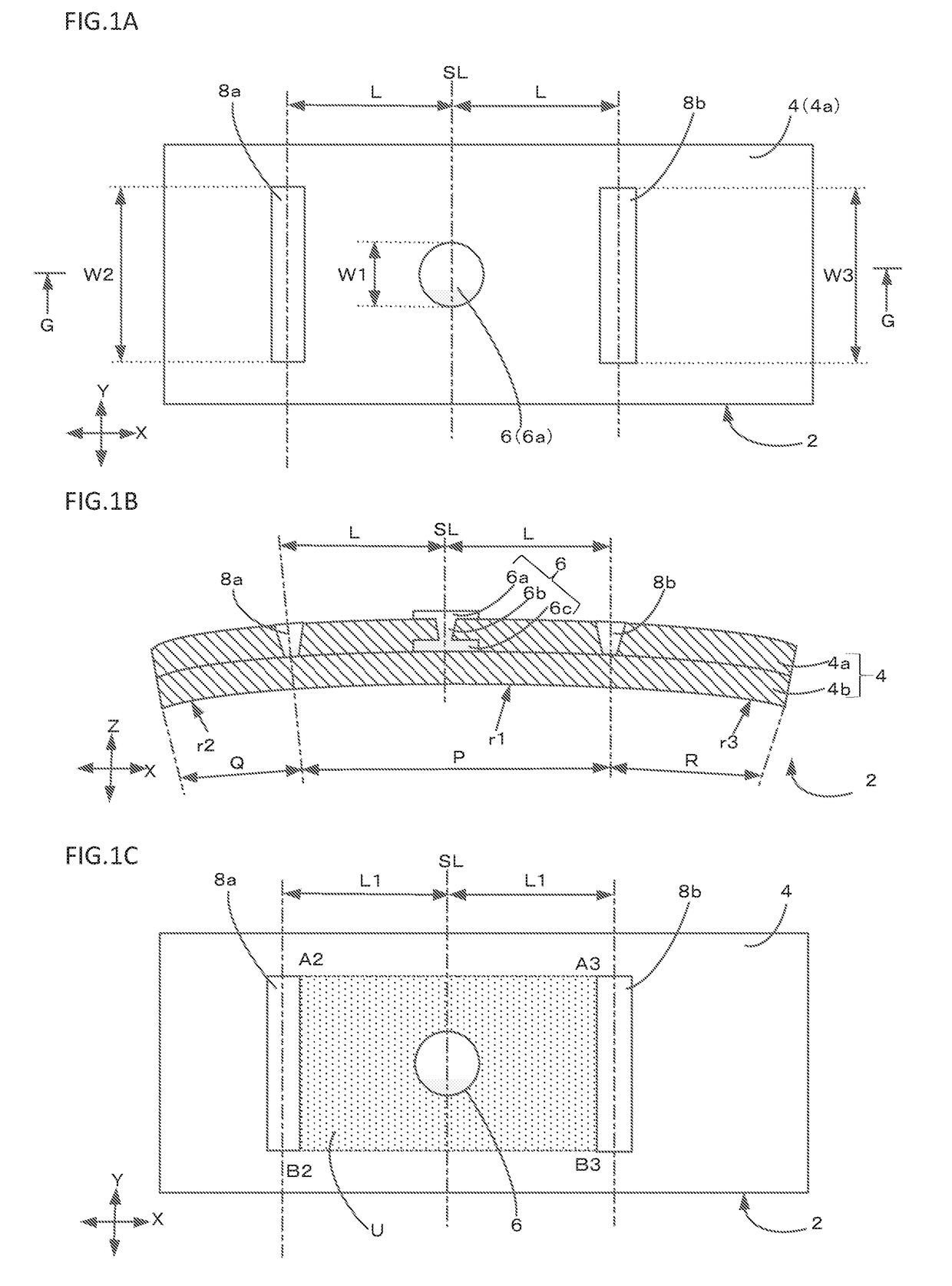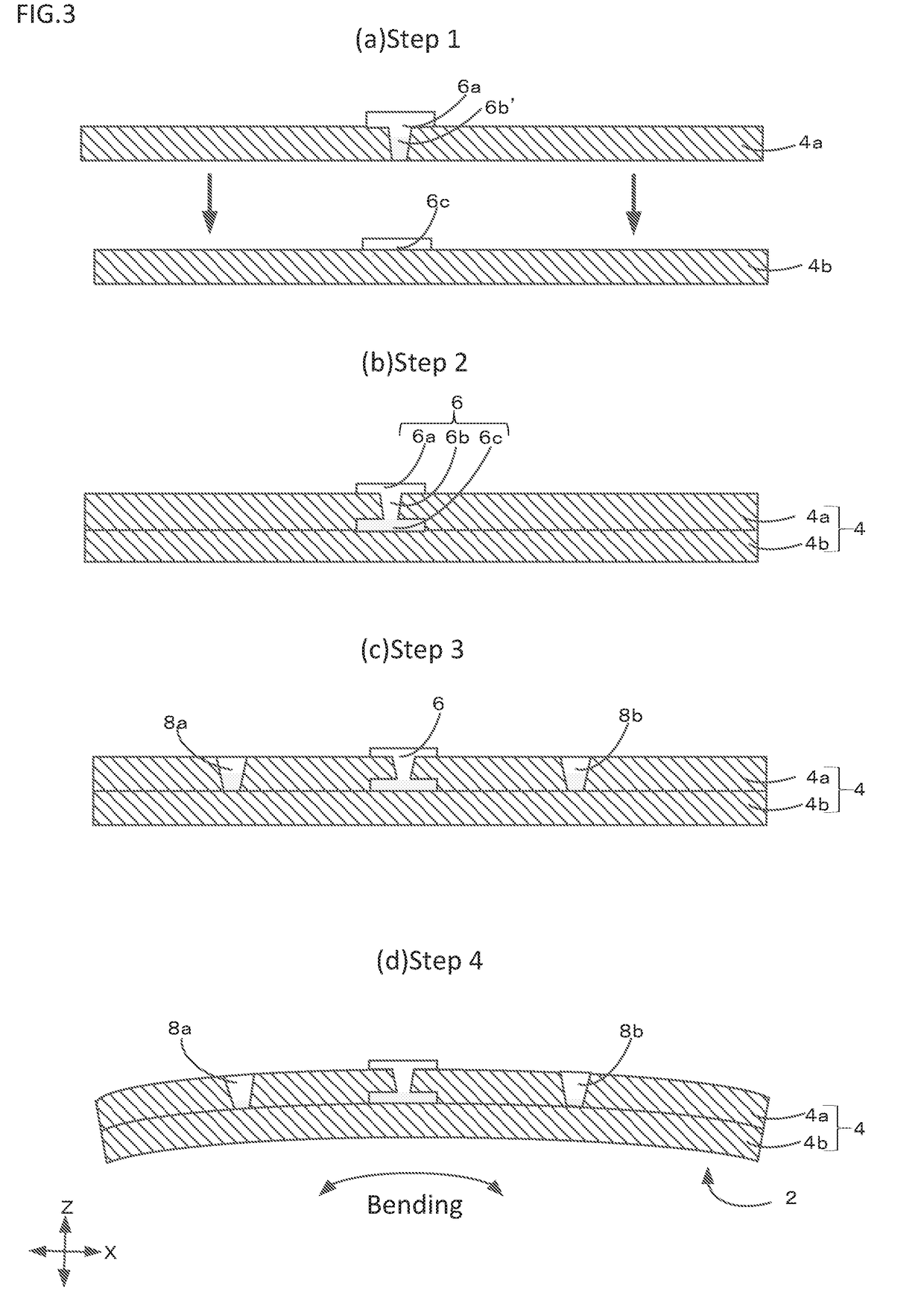Multilayer substrate
- Summary
- Abstract
- Description
- Claims
- Application Information
AI Technical Summary
Benefits of technology
Problems solved by technology
Method used
Image
Examples
first preferred embodiment
[0021]FIGS. 1A to 1C schematically show, in plan view and in cross section, a multilayer board 2 according to a first preferred embodiment of the present invention. FIG. 1A is a plan view, FIG. 1B is a cross sectional view taken along line G-G of FIG. 1A, and FIG. 1C is a reference plan view showing a positional relationship between an interlayer connection conductor and notches.
[0022]The multilayer board 2 according to the present preferred embodiment includes a flexible base material 4 including a plurality of laminated insulator layers 4a and 4b. In all of the views, with a Z-axis direction being a lamination direction, the flexible base material 4 is curved along an X-axis (referred to as “first direction”) that is one direction on a plane orthogonal or substantially orthogonal to the Z-axis direction (lamination direction). That is, the X-axis direction (first direction) is a bending direction of the flexible base material 4. Let a Y-axis direction (referred to as “second direc...
second preferred embodiment
[0053]FIGS. 4A to 4C schematically show in cross section and in plan view a multilayer board 2 according to a second preferred embodiment of the present invention.
[0054]In the present preferred embodiment, bottom surfaces S of the notches 8a and 8b in the Z-axis direction (lamination direction) are not coincident with a layer interface between the insulators 4a and 4b. Stress tends to concentrate on the layer interface between the insulator layers 4a and 4b, which layers become likely to peel off at the interface when subjected to a bending force. However, by not allowing the bottom surfaces S of the notches 8a and 8b to coincide with the layer interface between the insulator layers 4a and 4b as in the present preferred embodiment, peeling-off arising from the notches 8a and 8b is less likely to occur when subjected to the bending force.
[0055]The sectional view of FIG. 4A shows the case in which the bottom surfaces S of the notches 8a and 8b do not extend to the bottom of the upper ...
third preferred embodiment
[0059]FIG. 5 is a sectional view schematically showing a multilayer board according to a third preferred embodiment of the present invention.
[0060]In the present preferred embodiment, a notch pair 8ab (notches 8a and 8b) and a notch pair 8cd (notches 8c and 8d) are disposed on a first main surface 12 side and a second main surface 14 side, respectively, of the flexible base material 4.
[0061]By disposing the notch pairs 8ab and 8cd on the upper and lower surface sides, respectively, of the flexible base material 4 in this manner, it is possible to effectively disperse bending stress concentrating in the interlayer connection conductor 6 and its peripheral region when a bending force is applied to the flexible base material 4.
[0062]Although in FIG. 5 the case is shown in which the flexible base material 4 includes the two insulator layers 4a and 4b, similar effects to the above are able to be obtained by disposing the notch pairs on the first main surface side and the second main surf...
PUM
 Login to View More
Login to View More Abstract
Description
Claims
Application Information
 Login to View More
Login to View More - Generate Ideas
- Intellectual Property
- Life Sciences
- Materials
- Tech Scout
- Unparalleled Data Quality
- Higher Quality Content
- 60% Fewer Hallucinations
Browse by: Latest US Patents, China's latest patents, Technical Efficacy Thesaurus, Application Domain, Technology Topic, Popular Technical Reports.
© 2025 PatSnap. All rights reserved.Legal|Privacy policy|Modern Slavery Act Transparency Statement|Sitemap|About US| Contact US: help@patsnap.com



